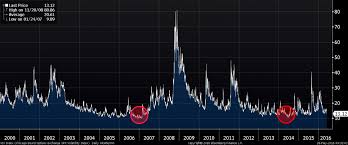How to trade VIX options in Singapore?

VIX options are short-term options that track the CBOE Volatility Index. It measures the market’s expectation of stock market volatility over the next thirty days and is sometimes called the “fear index”. The VIX options traded in Singapore trade at a month-long contract, which means it will expire before the expiry date for other equity options.
To trade VIX options in Singapore, you need to understand how they work. These are European style derivatives, so there is no early exercise or assignment. It gives them some unique properties compared to American-style equity options, such as higher costs and reduced liquidity. In addition, any US holding also needs to be considered. So you can’t sell your index holdings here in Singapore to buy-back options.
To trade VIX options in Singapore, you need to be aware of the following cost of trading:
Options Contract Fee (OCF)
Approximately S$5-7 per contract. The broker charges a fixed fee, which gets added to the premium on both sides, so you are selling your premium at 5-7% higher than the market price. Fund managers are known to get charged 0.3%-0.7%, but that may include other services such as execution etc. If you are doing it yourself, then perhaps you should enter this into your funding rate while testing how much margin is required for your portfolio size and risk profile.
Stamp Duty
For options, you have to pay stamp duty on the option premium. But there is no duty for selling cash-settled VIX futures.
Equity Margin Requirements
The Margin requirement will depend on your broker, but this can range from S$10k to 100k depending on how much buffer they require. A typical guideline would be 1/100th of trading capital, so if you have S$100k in your account, you might receive an initial margin call for S$1k on top of the base rate, which is usually 0.25%.
It varies widely between brokers, so make sure you know their guidelines before placing trades. Not all brokers will accept Singapore residents as clients, especially smaller ones. But for those who do, you can sometimes negotiate a lower margin if you have good credit and trading track record.
Annual Account Fee
However, if they do, it will typically be S$500 to S$6000, depending on your account size. It does not apply to market makers.
Interest Readjustment
Most brokers use dynamic interest rates to adjust the daily margin requirements as prices move up and down during market hours.
If you have an account with a broker that uses fixed-rate interest, note that your margin may change from one day to the next even though nothing has changed in your balance or portfolio composition. Your broker will send out an email if there is a margin change, and typically it will be around S$1 per 1k in the margin.
Intra-day Mark-to-market (MTM) requirements
If you hold positions overnight, your broker may require price watch limits to protect you from adverse movements when the market is closed. It can range from 100% to 10% of most brokers’ total open position amount without additional fees, depending on how much they require you to reduce your position sizing if prices move against you during the day.
If there are additional charges, it is usually a percentage of intraday trading turnover. It varies widely between brokers, so check with them if that matters to you. Some brokers use dynamic price limits instead, which may or may not benefit you.
VIX Futures Margin Requirements (Cash-settled futures only)
As an option buyer, you do not need to pay any margin on the cash-settled futures because nothing physical can be delivered or carried over. The margin will never change throughout the contract’s lifetime, even if volatile prices. However, option sellers have to put up initial margins on both sides of their trade, so they effectively trade with a 1/4 ratio which they usually adjust according to how much “vega” they have in their portfolio.




